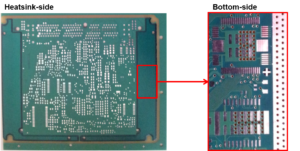Should Cost Analysis for Electronics Manufacturing
The cost of manufacturing electronics can vary widely depending on the type of product and the resources needed to create it. Understanding these costs is essential for making informed decisions about production and pricing. In this article we will look into the should cost analysis for electronics manufacturing, exploring what factors play a role in determining production costs
When it comes to producing electronics, should costing is one of the most important steps in determining the price of a product. Should costing involves analyzing all the inputs used to create an electronic device in order to determine the total cost of production.
This includes materials, labor, overhead costs, and other expenses associated with the manufacturing process. By understanding the cost breakdown of a product, companies can make informed decisions on pricing and ensure that they are not charging too much or too less for their products.
By carrying out a comprehensive should-cost analysis for electronics manufacturing, companies can ensure that they are not overcharging for their products and make educated decisions when it comes to pricing. It also helps them understand the cost breakdown of their products and make informed decisions on how they can reduce production costs and increase profits.
Companies can use should-cost analysis to make informed decisions about pricing. If a company finds that the cost of producing a certain product is more than its expected sale price, then it may need to reconsider its pricing strategy. Additionally, should costing can be used to identify areas of production that are more expensive than others and determine if there are ways to reduce these costs.
Steps in a should-cost analysis
- Input Study: This step involves collecting data from various sources such as suppliers, competitors, industry norms, and other stakeholders. It’s important to understand the inputs that go into a product such as raw materials, labor, and manufacturing equipment. This information is used to compare costs and identify potential savings. This involves identifying all the inputs used in the manufacture of the device. For example, if you are producing a smartphone, you will need to consider the cost of components such as processors, memory chips, and displays. Additionally, any materials used in an assembly such as plastics or metals should also be considered. Once all the inputs have been identified, it is possible to understand what processes are involved in their production.
- Process Mapping:-Process mapping identifies the processes that are involved in the production of a product. This includes understanding the processes such as assembly, testing, packaging, and delivery. Knowing the different steps involved helps better understand how to optimize them for cost savings.
- Cost Modeling: This step involves creating an accurate cost model based on the input study and process mapping from the previous steps. This cost model will include all of the variables that go into making a product such as raw materials, labor, equipment, and shipping costs. Once you have your cost model, you can start to analyze where cost savings can be made.
- Should-Cost Analysis: The last step is to use should-cost analysis to compare the actual costs to what it should cost to produce a product. This allows us to identify areas where there are potential savings and make changes that will reduce costs.
By following these steps in a should-cost analysis, you can ensure that you are producing electronics in the most cost-efficient way possible.
Carry out an input study
When it comes to analyzing the cost of making electronics, an important first step is to carry out an input study. This involves studying the components that go into making a product and assessing their cost. It’s important to understand what components are involved in the manufacturing process and how much each component costs. This helps to get a better understanding of how much the total cost of production will be.
Input studies involve looking at the costs of raw materials such as components, labor, energy, and other inputs that go into the production of an electronic product. It’s also important to take into account any overhead costs associated with the production process. It’s essential to understand the overall cost structure in order to make accurate decisions about pricing and production methods.
For example, if you’re making a computer, you’ll need to look at the cost of each component that goes into making it, such as the processor, memory, hard drive, and other components. You’ll also need to consider costs associated with labor, energy, and other overhead costs. Once you have a complete list of components and costs, you can then begin to build a model to determine how much it will cost to produce the product.
Understand what processes are involved
When performing a should-cost analysis for electronics manufacturing, it is essential to understand the processes involved in order to accurately analyze and assess costs. This means gaining an understanding of the entire supply chain and product life cycle, from raw material sourcing and component assembly to testing, packaging, and distribution.
The first step in understanding what processes are involved in researching the product and its components. You should know the raw materials used, the components that make up the finished product, and the production process itself. Understanding the exact design and specifications of the product can also help you understand the manufacturing processes that are required.
The second step is researching the production process itself. This includes understanding the number of steps required for each product, such as assembly, testing, packaging, and distribution. Additionally, it is important to understand how many resources and personnel are required for each step of the production process. Researching what machines are used and how often can help you better understand the production process.
Finally, researching suppliers and understanding the pricing models used by them can help you gain insight into the costs associated with manufacturing electronics. Knowing the prices for raw materials and components, as well as any taxes or duties applicable, will provide you with a more complete picture of all the costs associated with electronics production.
By understanding all of the processes involved in producing electronics, you can better assess all of the costs associated with the production of your product. Taking the time to research each step will allow you to accurately model costs, giving you an accurate and comprehensive view of what it takes to produce electronics.
Perform cost modeling
When it comes to cost Analysis for electronics Manufacturing, cost modeling is a crucial step. Cost modeling helps you to develop a complete understanding of all the costs associated with each product and process.
This is done by analyzing each component and its associated costs, as well as any additional labor costs associated with the manufacturing process. Cost modeling involves assigning values to each of the inputs used. This can be done using various techniques such as activity-based costing or through empirical analysis of costs related to similar products. After assigning values to each input, a total cost can be calculated.
Companies can then use this data to understand how much money is needed to produce a certain number of units. Cost modeling also helps to identify potential savings opportunities and identify areas where cost savings could be made.
Cost modeling involves several different steps, such as collecting and organizing data, conducting pricing analysis, and assessing how the components are used in the manufacturing process. It also requires understanding the various production processes that are involved in producing the product. Additionally, cost modeling can help determine where changes need to be made to reduce costs or improve efficiency.
Once all of the data has been collected, it is then analyzed to determine the total cost of manufacturing the product. The data is typically presented in a format that can be easily read and understood by decision-makers.
After reviewing the cost analysis report, decision-makers can then make informed decisions about which processes should be improved and where savings can be made. With cost modeling, companies can ensure that their products are produced as efficiently as possible, helping them to remain competitive in the marketplace.
How to use should-cost analysis
Using should-cost analysis, or cost modeling is a great way to get a better understanding of the costs associated with producing electronics.
The process begins with a comprehensive input study that looks into all the elements involved in the manufacture of electronics. This includes parts, labor, shipping, assembly, and other costs. By examining each component of the cost structure, you can gain an understanding of how much each component contributes to the overall cost.
Once you’ve identified all of the components, you can then model out the total costs and come up with a “should cost” figure. This figure is based on the current market price of materials, labor rates, and other factors. By using this should-cost analysis, you can better understand the potential costs associated with producing a given product.
Using this information, you can then determine if a particular product is worth pursuing and if it’s feasible to manufacture within your budget. If the costs are too high, you may need to explore different options or take steps to reduce costs in order to make it feasible.
Should-cost analysis can also be used to compare different suppliers or manufacturers and decide who would be best suited for producing a particular product. By looking at the cost structure for each supplier or manufacturer, you can determine which one offers the best combination of quality and price.
Overall, should-cost analysis is a great tool for understanding the financial implications of producing a given product. By taking the time to analyze all the inputs and understand the total costs associated with production, you can make informed decisions about whether a particular product is worth pursuing or not.
EMSxchange Enables you to select a Printed Circuit Board, PCB Assembly, cable & wire harness assembly, and box-build suppliers meeting your Required Electronic Manufacturing Capability, capacity, and Certification Criteria from a global Electronic contact manufacturer base.
EMSxchange takes complete responsibility and ownership for your electronic manufacturing process and all its deliverables from contract manufacturing supplier selection to manufacturing to quality inspection to shipment and delivery to your door.
EMSxchange Electronic Manufacturing Partners Profile includes:
Argus Systems (AESPL) – PCB, PCBA, Cable Assembly, Box Build, Testing.
CerraSystems Inc – HDI PCB, Rigid Flex PCB, RF PCB




